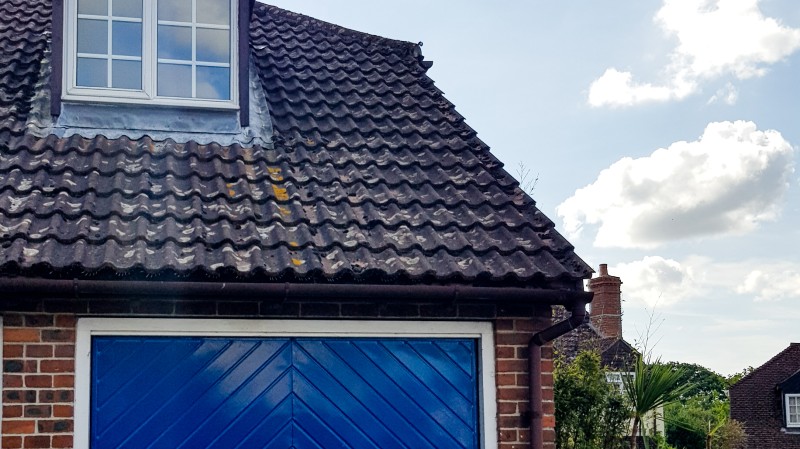You are here: Building above the garage
Building above the garage
Converting the space above a garage can add substantial value to your home but firm foundations are key
Building an extra bedroom and bathroom above your garage can add significant value to a home. This scenario is possible if you have a double garage or even a single garage with or without a car port. “While it’s not considered one of the quickest wins to increase property value by comparison to say kitchen and bathroom refurbs, internal decoration, garden landscaping or front of house facelifts, adding an additional room over a garage can be equal to a room-in-a-roof conversion or converting the garage into habitable space,” says Chris Barrett, director of AuthentiServ Ltd.

Extending above a double garage should give you sufficient space for a decent-sized bedroom and ensuite or a second living room. But what if you have a single garage typically measuring 2.8m x 5.5m externally - is it still cost-effective to build above it? “Double garages have a larger footprint and therefore afford more potential for first floor accommodation or ‘room in roof’ conversion,” says Barrett, a qualified building surveyor and RICS associate. But singles can still be worthwhile.
Issues to be considered include access from the rest of the house. Will you have to sacrifice part of an existing bedroom to create a passageway and door to the new room? Careful consideration should also be given to the roof construction and pitch, says Barrett. “If a flat roof is constructed, you can use the full floor area with a ‘box’ construction, however if there is a steep pitch to the roof with slope extending to the ground level, there may be deep eaves that cannot be used for habitable purposes.”
Checking the foundations
The million-dollar question with any project that involves building over a garage is whether the existing structure can support the additional loadings. Many older garages are cheaply built with shallow foundations and single skin walls. New integrated garages are more likely to have good solid foundations like the main house. “Generally, garage foundations will not be sufficient to support the additional weight of the first-floor construction and loads,” warns Barrett.
Garage foundations will need to be checked to prove they can take the extra load. The only way to do this is to dig two to three trial holes to physically expose the current foundations. Trial holes can be dug alongside the existing garage walls at the junction with the house so both foundations can be checked at the same time and to identify any drainage pipes or incoming services. Some building control officers may want to inspect the excavated holes to see the type and depth of foundations in relation to the subsoil.
Strengthening foundations
All home extensions need to comply with Building Regulations. If you’re extending over the garage, you’ll have to provide proof to your local building control department that it’s not going to fall down because of the weight of the room above. This means hiring a structural engineer to produce calculations and drawings to accompany your building regulations application, including evidence from digging the trial holes and ground conditions. Of course, your builder will also need this information for a high-quality construction.
If foundations are too weak to support an extra storey it may be better to demolish and rebuild. “There are circumstances when full demolition and removal of existing foundations are the most economical and advisable option,” says Barrett. “However, there are other circumstances that might restrict this option, such as where basement construction exists or where foundations affect a neighbouring property.”
There are other options to explore. For instance, erecting a new first floor with a steel frame construction supported by posts installed on new concrete pad/cube foundations rather than traditional strip foundations. While shallow foundations can be beefed-up by pouring large quantities of concrete to underpin and extend them, this is rarely cost-effective, plus it doesn’t upgrade the walls.
There is no one, simple answer as to whether the foundations are likely to be strong enough to support a garage extension, says Barrett. Each project needs to be individually assessed. “Every property will be slightly different and with various needs and desires of the clients to factors in. In my view every instruction is unique.”
Variables include construction methods, site ground conditions and pitch of the plot. Any upgrading or underpinning of existing foundations should be carefully considered, carried out by specialists and involve a structural engineer, says Barrett.
The right type of wall
Garages are not designed to be habitable structures. Most modern garages have a thin, single skin wall which won’t be up to the job of supporting the proposed new storey above. It’s possible to upgrade a single leaf garage wall. For example, by adding a new inner masonry skin and cavity insulation in line with the structural engineer’s calculations and to meet Building Regulations. High quality modern oak frame garage walls can also be upgraded. If you’re in luck the garage walls might match those of the main house and be cavity construction suitable for building above. Some types of wall construction are not likely to be suitable. “Generally speaking, there can be issues with buildings of non-standard construction, such as pre-cast reinforced concrete homes and metal frame properties,” says Barrett.
Other issues to consider
Other issues to consider in the early planning stages include how you propose to access your new room above the garage. Will all or part of an existing first floor bedroom be sacrificed to make space for a new passageway and door to the extra room. Might a better solution be a second staircase? Will a window in the existing house be blocked by the new extension? Another issue that is often overlooked is headroom, says Barrett. “Roof ridge height is of particular importance and a primary consideration for planning authorities. A reasonable assumption is that you will not be able to construct a new roof line above the existing property (or adjacent property) ridge height. As such, this can have implications for internal headroom, staircase headroom clearance and usable space.” Planning permission is likely to be required when adding a room above a garage because of the extra height and alteration to the roof line.
Ultimately, whether it’s best to extend above an existing garage or knock it down and start again will depend on the cost. If the foundations are structurally sound and the walls can be upgraded, then building above the garage is probably worth considering. Do the sums before you start. Ask local estate agents how much value the extra room is likely to add to your home and compare that to the cost.
If you are looking to make some home improvements, you may find some of these services useful
Building Regulations
Find details of local experts who can help with Building Regulations
Builders
Find local help with a building project
Architectural Design Services
Find local Architectural Design experts
Structural Inspections
Find an expert to carry out a structural inspection
Building Surveys
I want a local surveyor to do a Building Survey for me
Choose which Architectural service you require
If you are not sure which service you require, check out the options available...


